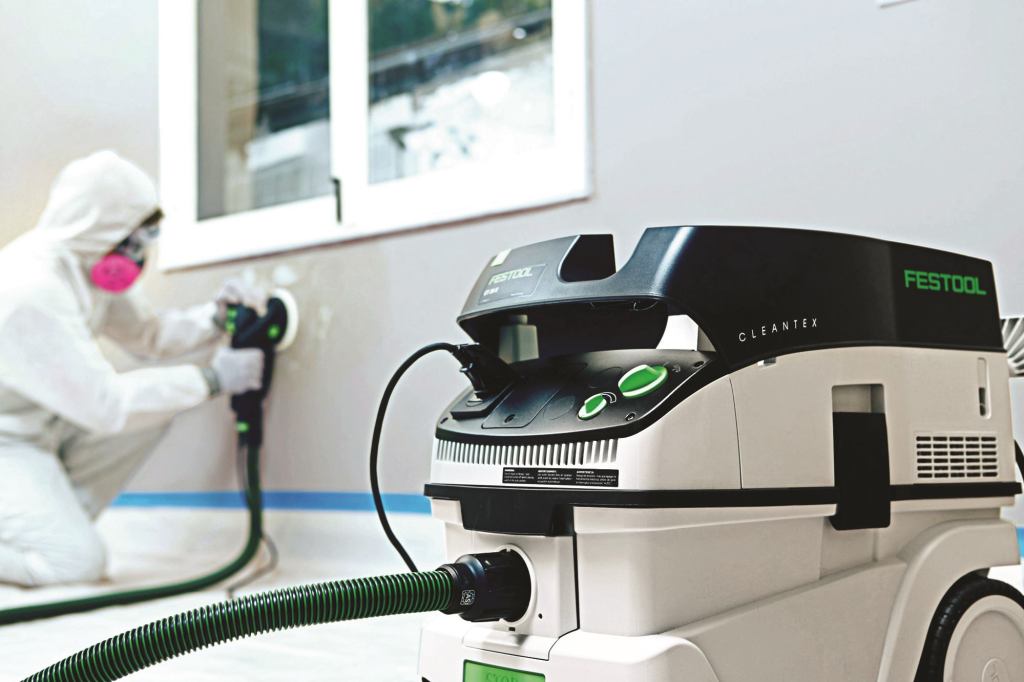Performance Tests
I ran the vacs through a battery of tests devised to figure out their strengths and weaknesses and learned a lot about their individual performance.
Fireplace Ash I began with picking up cold fireplace ash to see if any dust got around or through the fleece bags. The vacs collected the ash readily, with a little getting by the inlet seal of the Fein bag. This fine ash holds static electricity, and the Bosch, Fein, and Metabo vacs without anti-static hoses delivered strong shocks during this test.
Sand and Gravel Picking up 3 gallons of sand and 2 gallons of pea gravel was problem for all of these vacs. When picking up heavy material, you do not want to use a liner bag. The smaller-volume bags are likely to rip as they become loaded and hang from the inlet with heavy material. Also, periodically check the cannister, as the heavy material tends to fall fast and load the cannister toward the front, and the vac will prematurely seem full. Only the Festool had enough velocity to sling the gravel to the back, allowing it to fill from back to front.
Coarse Sawdust If a filter bag is used, its size, not the canister’s, determines the volume of dust a vac can hold. I used very coarse sawdust and small wood chips, sifted out for uniformity, until the bag clogged. Then I smoothed out the contents, cleared the inlet port, and ran it until the unit clogged again. I repeated this two or three more times until the bag was full. Here are the results: The Festool bag didn’t clog until it took in 3 1/2 gallons, and then filled up to an impressive 7 1/2 gallons. Bosch followed with 3 gallons, then finally 6 gallons. Fein took 3 and topped at 4; DeWalt 2 1/2, then 3 1/2; Makita 2, then 5 1/4; and Metabo 2, and then 4 1/2 gallons of wood debris.
Loose Dust My final trial involved picking up 50 pounds of drywall texture powder—close to 5 gallons in volume—without a filter bag installed. This let me test the collection performance of the vacs while their filters were caked with dust, as well as the effectiveness of the filter-cleaning systems. (See results summary). In addition, this test gave me the perfect opportunity to see if any dust leaked past the filters. To determine a pass/fail limit, I borrowed a European performance standard that establishes 20 meters/second (65.6 feet/second) at the hose for safe and effective operation.
Dust Leaks After this first exposure to loose dust, I inspected to see if any of the vacs leaked dust past the filters or elsewhere. The Festool came out on top with absolutely pristine surfaces beyond the filter. The filter is held by a simple cam-lever clamp that obviously works well. The Bosch and Fein each had only a little dust evident that got past the corner of the filter gasket. The Metabo showed slight sprays of dust that appear to have gotten past the gaskets at the top of the filters that flex when the filters are shaken clean. In a mixed result, the Makita showed no signs of dust getting around either filter, but it did leak dust visibly out of the rear of the main gasket between the canister and the motor head. The DeWalt vac had major dust problems with the Type I filter that I initially tested, but not with the newer Type II version. None of the vacs exhibited leaks when filter bags were used. The clear lesson here is to always use a filter bag for any RRP work where dust leakage cannot be tolerated.
Air Velocity at Hose After Dust Test (feet/second)
This measurement was taken after intentionally loading HEPA filters. Units run with filter cleaning sytems performed best.
Air Velocity at Hose Before Dust Test (feet/second)
The higher the air velocity, the more force there is to grab particles. This measurement was taken with clean filters.
Max. Airflow at Hose End Using Manufacturer-Supplied Hose (cfm)
A second measurement was taken with the hose provided.
Max. Airflow at Vac Inlet (cfm)
